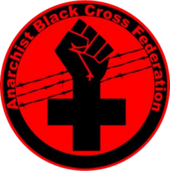
Peter Andreyevich Arshinov, was a Russian anarchist revolutionary and intellectual who chronicled the history of the Makhnovshchina.

Albert Isidore Meltzer was an English anarcho-communist activist and writer.

Nestor Ivanovych Makhno, also known as Batko Makhno, was a Ukrainian anarchist revolutionary and the commander of the Revolutionary Insurgent Army of Ukraine during the Ukrainian War of Independence. He established the Makhnovshchina, a mass movement by the Ukrainian peasantry to establish anarchist communism in the country between 1918 and 1921. Initially centered around Makhno's home province of Katerynoslav and hometown of Huliaipole, it came to exert a strong influence over large areas of southern Ukraine, specifically in what is now the Zaporizhzhia Oblast of Ukraine.

Vsevolod Mikhailovich Eikhenbaum, commonly known by his pseudonym Volin, was a Russian anarchist intellectual. He became involved in revolutionary socialist politics during the 1905 Russian Revolution, for which he was forced into exile, where he gravitated towards anarcho-syndicalism.
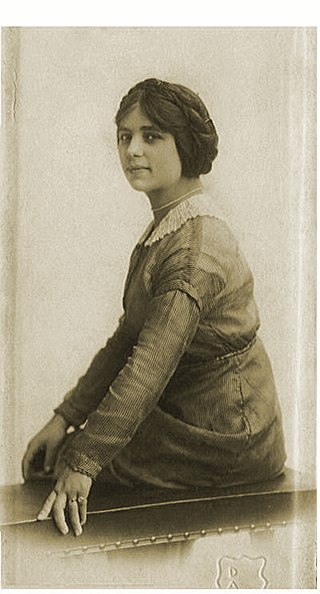
Fanya Anisimovna Baron was a Russian Jewish anarchist revolutionary. She spent her early life participating in the Chicago workers' movement, but following the Russian Revolution in 1917, she moved to Ukraine and participated in the Makhnovist movement. For her anarchist activities, she was arrested and executed by the Cheka.
The Communist League was one of the first Trotskyist groups in Britain, formed in 1932 by members of the Communist Party of Great Britain in South London, including Harry Wicks, who had been expelled after forming a loose grouping inside the CPGB known as the Balham Group. This became the British Section of the International Left Opposition and adopted the name Communist League in June 1933. They published a monthly newspaper, Red Flag, and a quarterly journal, The Communist.
Miguel García García (1908–1981) was a Spanish anarchist and writer. He was a political prisoner during the Franco era.

Black Guards were armed groups of workers formed after the February Revolution and before the final Bolshevik suppression of other left-wing groups. They were the main strike force of the anarchists. They were created in the Summer of 1917 in Ukraine by Maria Nikiforova, and expanded in January 1918 to Moscow, under the control of anarchists at industrial enterprises by Factory and Plant Committees and by Moscow Federation of Anarchist Groups cells.
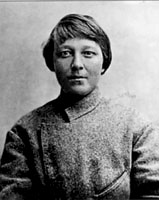
Maria Hryhorivna Nikiforova was a Ukrainian anarchist partisan leader that led the Black Guards during the Ukrainian War of Independence, becoming widely renowned as an atamansha. A self-described terrorist from the age of 16, she was imprisoned for her activities in Russia before managing to escape to western Europe. With the outbreak of World War I, she took up the defencist line and joined the French Foreign Legion on the Macedonian front before returning to Ukraine with the outbreak of the 1917 Revolution.
Anarchism and nationalism both emerged in Europe following the French Revolution of 1789 and have a long and durable relationship going back at least to Mikhail Bakunin and his involvement with the pan-Slavic movement prior to his conversion to anarchism. There has been a long history of anarchist involvement with nationalism all over the world as well as with internationalism.
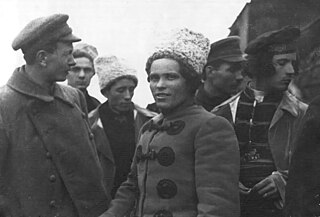
Anarchism in Ukraine has its roots in the democratic and egalitarian organization of the Zaporozhian Cossacks, who inhabited the region up until the 18th century. Philosophical anarchism first emerged from the radical movement during the Ukrainian national revival, finding a literary expression in the works of Mykhailo Drahomanov, who was himself inspired by the libertarian socialism of Pierre-Joseph Proudhon. The spread of populist ideas by the Narodniks also lay the groundwork for the adoption of anarchism by Ukraine's working classes, gaining notable circulation in the Jewish communities of the Pale of Settlement.
Anarchism in Russia developed out of the populist and nihilist movements' dissatisfaction with the government reforms of the time.

The Cause of Labor was a libertarian communist magazine published by exiled Russian and Ukrainian anarchists. Initially under the editorship of Peter Arshinov, after it published the Organizational Platform, the subsequent controversy resulted in his exit from the anarchist movement. The magazine was then picked up by Grigorii Maksimov, who moved it to the United States and edited it until his death in 1950.
The Nabat Confederation of Anarchist Organizations, better known simply as the Nabat, was a Ukrainian anarchist organization that came to prominence during the Ukrainian War of Independence. The organization, based in Kharkiv, had branches in all of Ukraine's major cities. Its constitution was designed to be appealing to each of the different anarchist schools of thought.

Olha Illivna Taratuta was a Ukrainian Jewish anarchist and a founder of the Anarchist Black Cross (ABC).

The Revolutionary Insurgent Army of Ukraine, also known as Makhnovtsi, named after their leader Nestor Makhno, was an anarchist army formed largely of Ukrainian peasants and workers during the Russian Civil War of 1917–1922. They protected the operation of "free soviets" and libertarian communes by the Makhnovshchina, an attempt to form a stateless anarcho-communist society from 1918 to 1921 during the Ukrainian War of Independence.
Platformism is an anarchist organizational theory that aims to create a tightly-coordinated anarchist federation. Its main features include a common tactical line, a unified political policy and a commitment to collective responsibility.
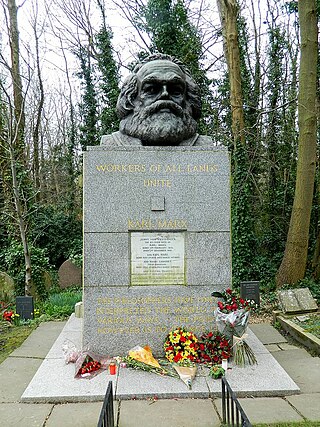
Far-left politics in the United Kingdom have existed since at least the 1840s, with the formation of various organisations following ideologies such as Marxism, revolutionary socialism, communism, anarchism and syndicalism.

Anatoli Grigorievich Zhelezniakov (1895–1919) was a Russian anarchist and revolutionary best known for dispersing the short-lived Russian Constituent Assembly on Bolshevik orders during the October Revolution.

Anarchism in Georgia began to emerge during the late 19th century out of the Georgian national liberation movement and the Russian nihilist movement. It reached its apex during the 1905 Russian Revolution, after a number of anarchists returned from exile to participate in revolutionary activities, such as in the newly-established Gurian Republic.



